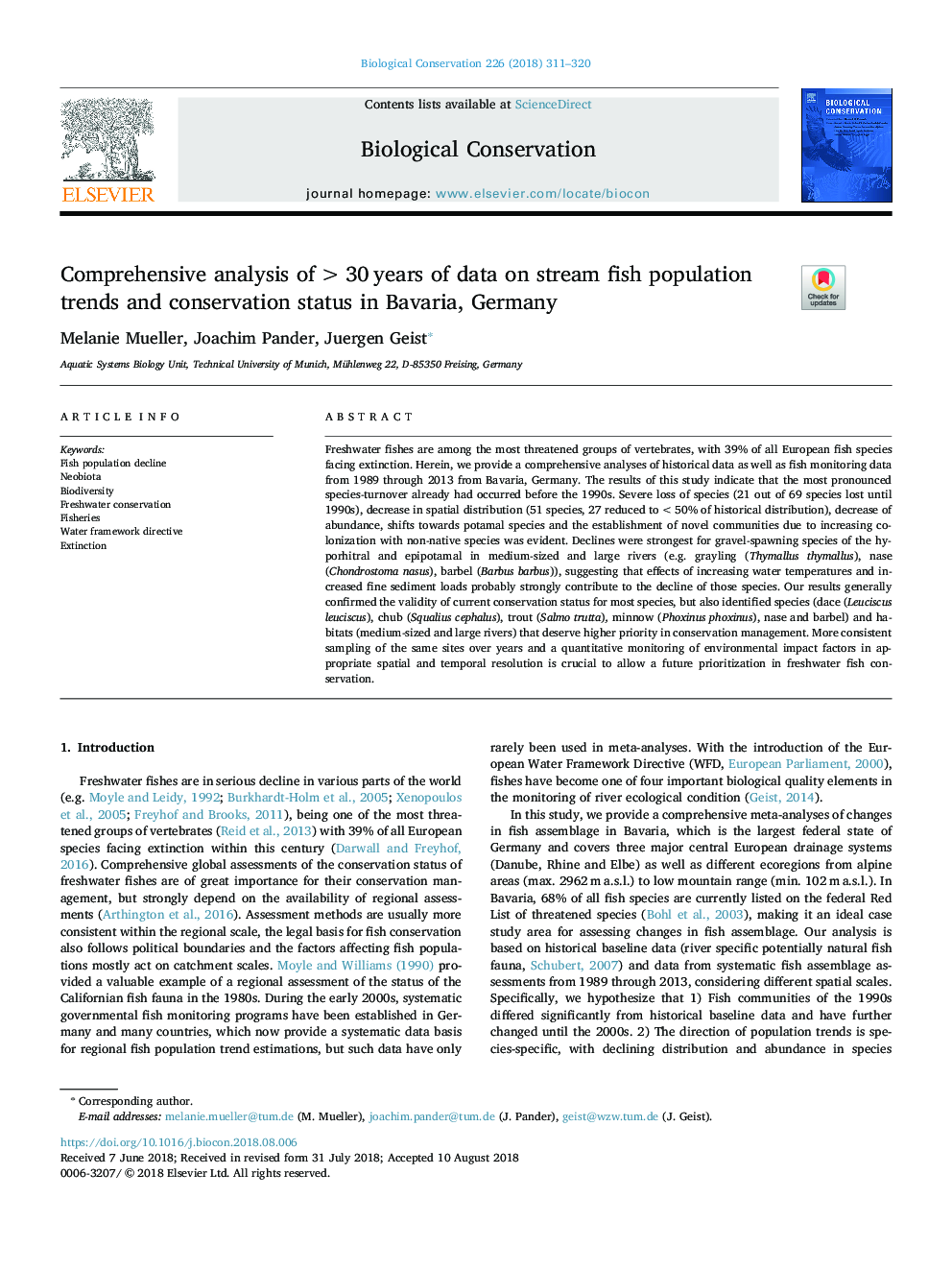| Article ID | Journal | Published Year | Pages | File Type |
|---|---|---|---|---|
| 10110128 | Biological Conservation | 2018 | 10 Pages |
Abstract
Freshwater fishes are among the most threatened groups of vertebrates, with 39% of all European fish species facing extinction. Herein, we provide a comprehensive analyses of historical data as well as fish monitoring data from 1989 through 2013 from Bavaria, Germany. The results of this study indicate that the most pronounced species-turnover already had occurred before the 1990s. Severe loss of species (21 out of 69 species lost until 1990s), decrease in spatial distribution (51 species, 27 reduced to <50% of historical distribution), decrease of abundance, shifts towards potamal species and the establishment of novel communities due to increasing colonization with non-native species was evident. Declines were strongest for gravel-spawning species of the hyporhitral and epipotamal in medium-sized and large rivers (e.g. grayling (Thymallus thymallus), nase (Chondrostoma nasus), barbel (Barbus barbus)), suggesting that effects of increasing water temperatures and increased fine sediment loads probably strongly contribute to the decline of those species. Our results generally confirmed the validity of current conservation status for most species, but also identified species (dace (Leuciscus leuciscus), chub (Squalius cephalus), trout (Salmo trutta), minnow (Phoxinus phoxinus), nase and barbel) and habitats (medium-sized and large rivers) that deserve higher priority in conservation management. More consistent sampling of the same sites over years and a quantitative monitoring of environmental impact factors in appropriate spatial and temporal resolution is crucial to allow a future prioritization in freshwater fish conservation.
Related Topics
Life Sciences
Agricultural and Biological Sciences
Ecology, Evolution, Behavior and Systematics
Authors
Melanie Mueller, Joachim Pander, Juergen Geist,
